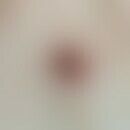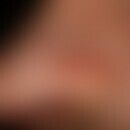Synonym(s)
DefinitionThis section has been translated automatically.
Polihexanide is a colorless and odorless, well-tolerated biguanide antiseptic, related to chlorhexidine, which is used in medicine to treat large wounds. It is also increasingly used as a preservative in the cosmetics industry. Another area of application is treatment of the oral cavity and conjunctiva.
Pharmacodynamics (Effect)This section has been translated automatically.
Polihexanide is characterized by a wide range of efficacy, including against enterococci and methicillin-resistant staphylococci (MRSA). Polyhexanide achieves its disinfecting effect by binding to the cell walls of the pathogens and irreversibly damaging them. Polyhexanide has a bactericidal effect even in very low concentrations. The effect occurs more slowly than with antiseptics such as octenidine, chlorhexidine or povidone-iodine.
You might also be interested in
Field of application/useThis section has been translated automatically.
Adjuvant antiseptic treatment of wounds, e.g. after surgical debridement. Also used for disinfecting surfaces and instruments, as a swimming pool disinfectant and as a disinfectant in contact lens cleaning products. Usual concentrations are 0.01-0.04 %, in pharmaceuticals up to 0.1 %.
Undesirable effectsThis section has been translated automatically.
Both Type I and Type IV sensitization can occur. Contact allergic dermatitis, contact urticaria, anaphylactic system reactions after local application are described.
Recipe(s)This section has been translated automatically.
PreparationsThis section has been translated automatically.
Lavanid® wound irrigation solution, Lavanid® wound gel, Lavasept® , Lavasorb® wound irrigation solution, Lysoform®
LiteratureThis section has been translated automatically.
- Creytens K et al(2014) Contact urticaria syndrome caused by polyaminopropyl biguanide in wipes for intimate hygiene. Contact dermatitis 71:307-309.
- Kautz O et al.(2010) Severe anaphylaxis to the antiseptic polyhexanide. Allergy 65:1068-1070.
- Laughing band JM (2014) A comparison of the irritant and allergenic properties of antiseptics. Eur J Dermatol 24:3-9.
- Olivieri J et al (1998) Severe anaphylaxis to a new disinfectant: polyhexanide, a chlorhexidine polymer. Switzerland Med Weekly 128:1508-1511.





